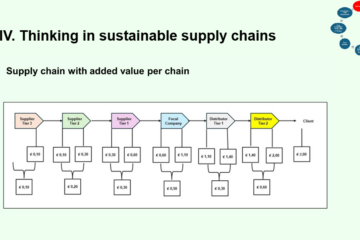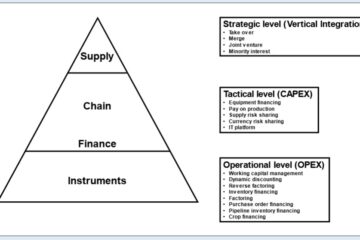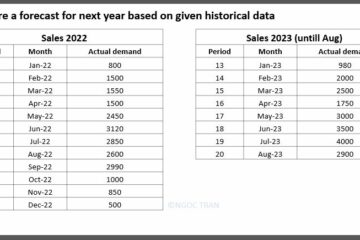Reverse Logistics and how companies have implemented it? (Part 1)

Have you ever wondered how a company processes your return? What you are familiar with may be about registering your turn, receiving the return label, and sending it to the post, and waiting to get your refund. However, the whole process is more complicated than that, at least from the company’s perspectives. Let’s discuss over reverse logistics shown in Figure 1 above (Bekrar et al., 2021) and how organizations have implemented it in their operations.
The recurrent main reverse logistics activities include the following stages:
• Collection, inspection, and separation: This stage includes all activities that are necessary for reclaiming returned products, surplus or by-products and transporting them to the inspection and processing place.
• Reuse: The returned products are still in a good condition that they can be re-used almost immediately in the same or an alternative market. Examples are reusable bottles, containers, most leased equipment, etc. It may also the case of surplus goods (e.g. spare parts which are left over after discarding the original equipment). This is the most resource-efficient and direct product recovery option (Grant et al., 2017).
• Remanufacturing: Remanufacturing is a series of steps to transform a part or product that has been used into one that is usable again. Cleaning, disassembly, replacement and re-assembly are some typical activities in remanufacturing. However, this stage mainly depends on product characteristics and design, which creates constraints to re-manufacture. For example, restoration for a piece of old furniture may require artistic skills.
• Recycling: Not all products can be reused, remanufactured, and refurbished, but their materials can be recycled and reused. Examples are packaging materials, vehicles, electrical and electronics products, batteries, etc. Those can be easily collected via supermarkets, product providers, and local authorities.
• Re-distribution: In this stage, the returned products will be introduced into a marketplace and transferred to customers. The process entails storage, transportation and sales which requires efficient marketing among interested parties to facilitate matching offers with requests.
• Disposal: When the goods or materials can’t meet the requirements of reuse, remanufacture, refurbish, recycle, and redistribute, they must be disposed accordingly to regulations.
Case study – Let’s have a look at the diagram below which illustrates how Amazon’s returns work.
Figure 2. How Amazon’s returns work
In e-commerce industry, the return rate is often around 20-30%, which is approximately more than 10%-20% of return in a brick-and-mortar store. With the effects of Covid-19, more customers have changed to online shopping, thus exaggerating this issue. More than $100 billion of returns happened in Amazon North America. All of these create a riddle of how to optimize the return process more efficient and effective?
What Amazon has done first was to gain the insight of that almost 80% of customers wanted free returns. Then, they introduced a 30-free-day return policy and simultaneously, asked for the reason (e.g. wrong size/color, damage, changed mind, etc.). This not only helps them identify the bottlenecks, but also separate customers who seem to abuse the return policy. Next, they offer customers two options for returning the items: drop-off and pickup. Usually, customers will be charged if someone goes to their home and picks the returns, because those pickup men account for a majority of cost and inefficiency. Instead, it is free if customers bring the returns to a drop-off point, which is nowadays easily accessible thanks to multiple locations across the neighbourhood or city. That is why Amazon and other e-commerce companies have established partnership with supermarkets and shopping malls to make it easier for customers. This also creates a win-win situation where customers, after getting the refund (soon), tend to wander around the stores and get something nice. Furthermore, if the value of the return exceeds the return costs, the customer may just keep it and wait for the refund. The following step is to sort the returns by robots and human after they reached the warehouses. As shown in figure 2, Amazon has five options to handle the returns, which reflect their intention to stimulate sustainability as much as possible. These methods depend on Amazon sellers and customer behaviour data. For example, Amazon sellers can choose the returns to be donated, or customers can deliver the returns without the packet so that Amazon can cut down the individual packaging waste.
To sum up, lesson learnt is to see reverse logistics differently, as seeking for significant economic opportunities – innovation-driven is one of the ways to make the process hassle-free so customers can trust the sellers and have more confidence to buy again.
I hope you have learnt something useful after reading this blog! In the next blog, I will dicuss which products are suitable in reverse logistics, including another insightful case study. After that, it could be something related to technology integration in reverse logistics. Getting excited now? Stay tuned and we meet again next week!
Thank you for reading and share if you think it’s useful!
Recommended reading:
Bekrar et al., (2021). https://www.mdpi.com/2071-1050/13/5/2895/htm
How Amazon’s returns work (Youtube video)
Sustainable logistics and supply chain management (Grant et al., 2017)
http://www.payaro.com/documents/Reverse%20logistics%20and%20RFID_payaro_2.PDF
Series Reverse Logistics
-
Reverse Logistics and how companies have implemented it? (Part 2)
Reverse Logistics and how companies have implemented it (Part 2)
-
Digital technology in reverse logistics
How to benefit from reverse logistics and digital technologies such as Radio Frequency Identification, Blockchain, Cloud computing and Artificial Intelligence (AI).
-
Reverse Logistics and how companies have implemented it? (Part 1)
Reverse Logistics: a case study on Amazon return policy



0 Comments